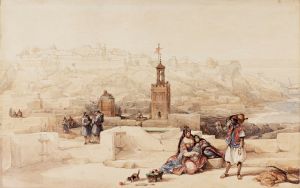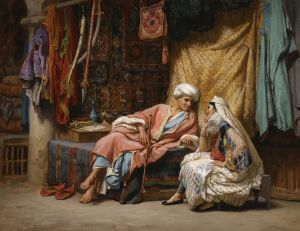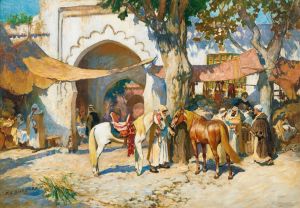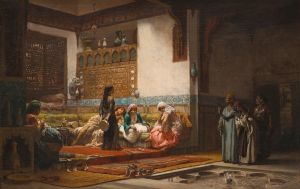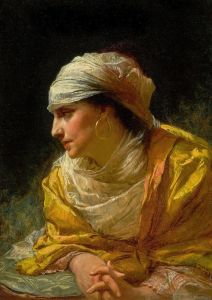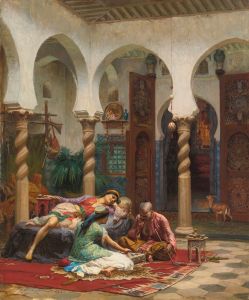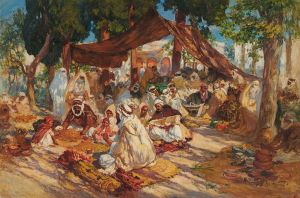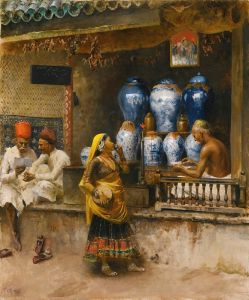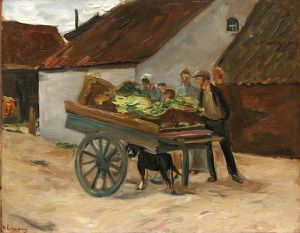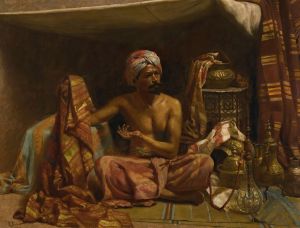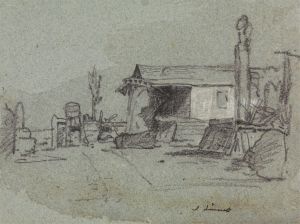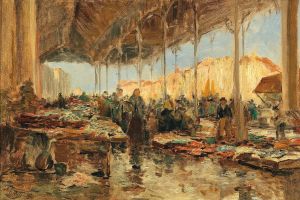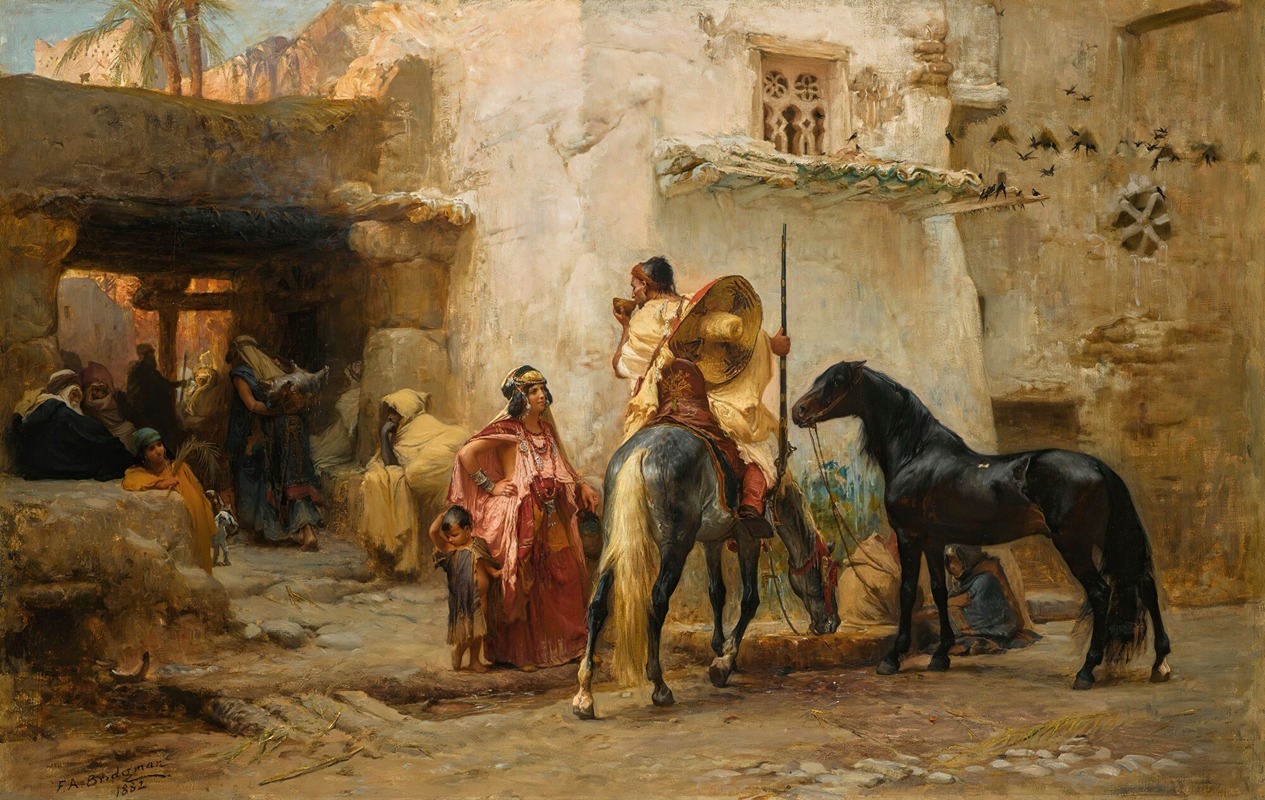
Street in Algeria
A hand-painted replica of Frederick Arthur Bridgman’s masterpiece Street in Algeria, meticulously crafted by professional artists to capture the true essence of the original. Each piece is created with museum-quality canvas and rare mineral pigments, carefully painted by experienced artists with delicate brushstrokes and rich, layered colors to perfectly recreate the texture of the original artwork. Unlike machine-printed reproductions, this hand-painted version brings the painting to life, infused with the artist’s emotions and skill in every stroke. Whether for personal collection or home decoration, it instantly elevates the artistic atmosphere of any space.
Frederick Arthur Bridgman (1847–1928) was an American artist known for his Orientalist paintings, which often depicted scenes inspired by his travels in North Africa and the Middle East. One of his works, Street in Algeria, exemplifies his fascination with the culture, architecture, and daily life of the region. Bridgman, who studied at the École des Beaux-Arts in Paris and worked under the French academic painter Jean-Léon Gérôme, developed a meticulous style that emphasized detail and realism, qualities evident in this painting.
Street in Algeria portrays a street scene in Algeria, capturing the essence of urban life in the country during the late 19th century. The painting reflects Bridgman’s interest in documenting the local environment, including the architecture, clothing, and atmosphere of the region. His works often sought to provide a romanticized yet detailed view of life in North Africa, appealing to the European and American fascination with the so-called "exotic" cultures of the time.
The composition of Street in Algeria likely includes elements typical of Bridgman’s Orientalist oeuvre, such as narrow streets, whitewashed buildings, and figures dressed in traditional Algerian attire. Bridgman’s attention to light and shadow, as well as his use of vibrant colors, helps convey the warmth and texture of the scene. His ability to depict intricate architectural details and the interplay of light on surfaces demonstrates his technical skill and dedication to realism.
Bridgman traveled extensively in North Africa, including Algeria, during the 1870s and 1880s, and his experiences there profoundly influenced his artistic output. He created numerous sketches and studies during his travels, which he later used as references for his studio paintings. These works were well-received in Europe and the United States, where they catered to the growing interest in Orientalist art.
While Street in Algeria is a testament to Bridgman’s skill as a painter and his ability to capture the spirit of a place, it is important to view the work within the context of Orientalism. Orientalist art often reflected the perspectives and biases of Western artists, who interpreted and represented non-Western cultures through their own lenses. As such, while Bridgman’s works provide valuable insights into 19th-century perceptions of North Africa, they may not fully or accurately represent the lived experiences of the people depicted.
Today, Street in Algeria is recognized as part of Bridgman’s broader contribution to Orientalist art. His works are held in various public and private collections, and they continue to be studied for their artistic merit and historical significance.





